Case Study
Bike Mobile E-Commerce Website
A mobile-first redesign for a premium bike retailer to simplify comparison and guest checkout, turning curious browsers into confident buyers.

Challenges
- No small-screen experience.
- Hard to compare bikes.
- Checkout friction; account required.
Goals
- Support mobile discovery to checkout.
- Make comparison effortless.
- Add guest checkout to cut drop-off.
My focus
- Research & synthesis
- Flows, wireframes, prototypes
- Ul system & usability testing
Research insights
What I learned
- Users open many product pages but can’t tell differences quickly.
- Account creation before checkout causes abandonment.
- They want specs up front: size, terrain, components, price.
Design principles
- Comparison first: align specs, enable quick contrast.
- Frictionless purchase: guest checkout, minimal fields.
- Small-screen clarity: concise cards, tap-friendly actions.
Solution highlights
Compare in one glance
Side-by-side spec summaries and saved comparisons to reduce back-and-forth browsing.
Guest checkout
Checkout without account creation; clear progress, minimal form fields, auto-fill friendly.
Mobile-first UI
Compact cards, large tap targets, and scannable detail blocks tailored for phones.
User flow
Mapped the core path from discovery to checkout to remove dead ends and reduce taps.

Wireframes
Quick sketches and low-fidelity wires to explore layout options for product cards and comparison.

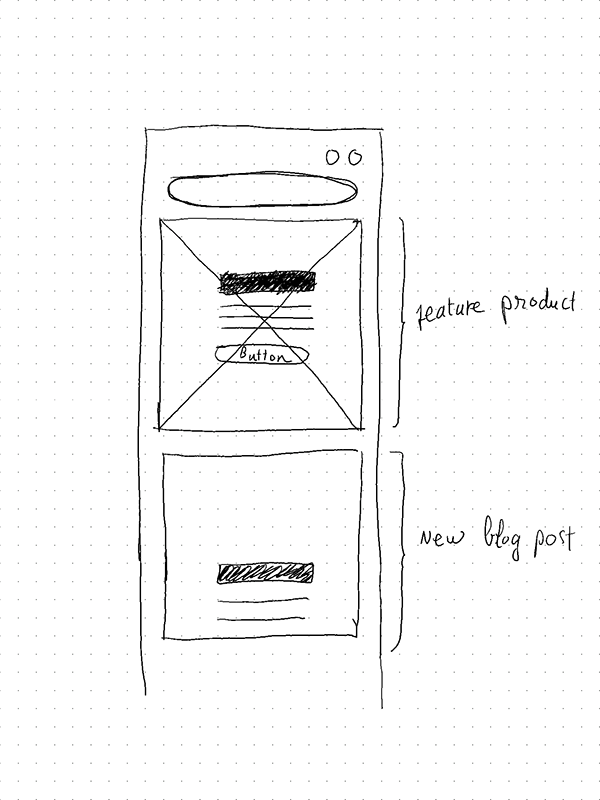

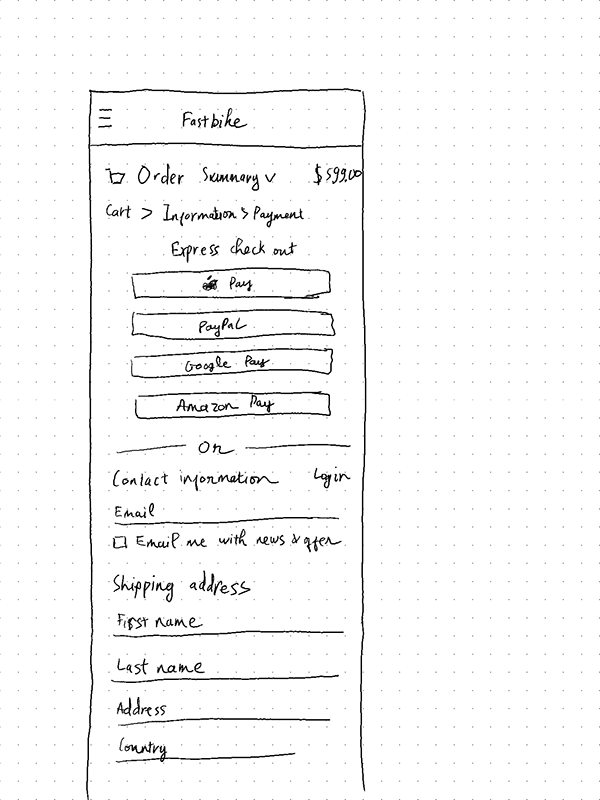
Lo-fi refinement
Focused on hierarchy and flows before visual polish.
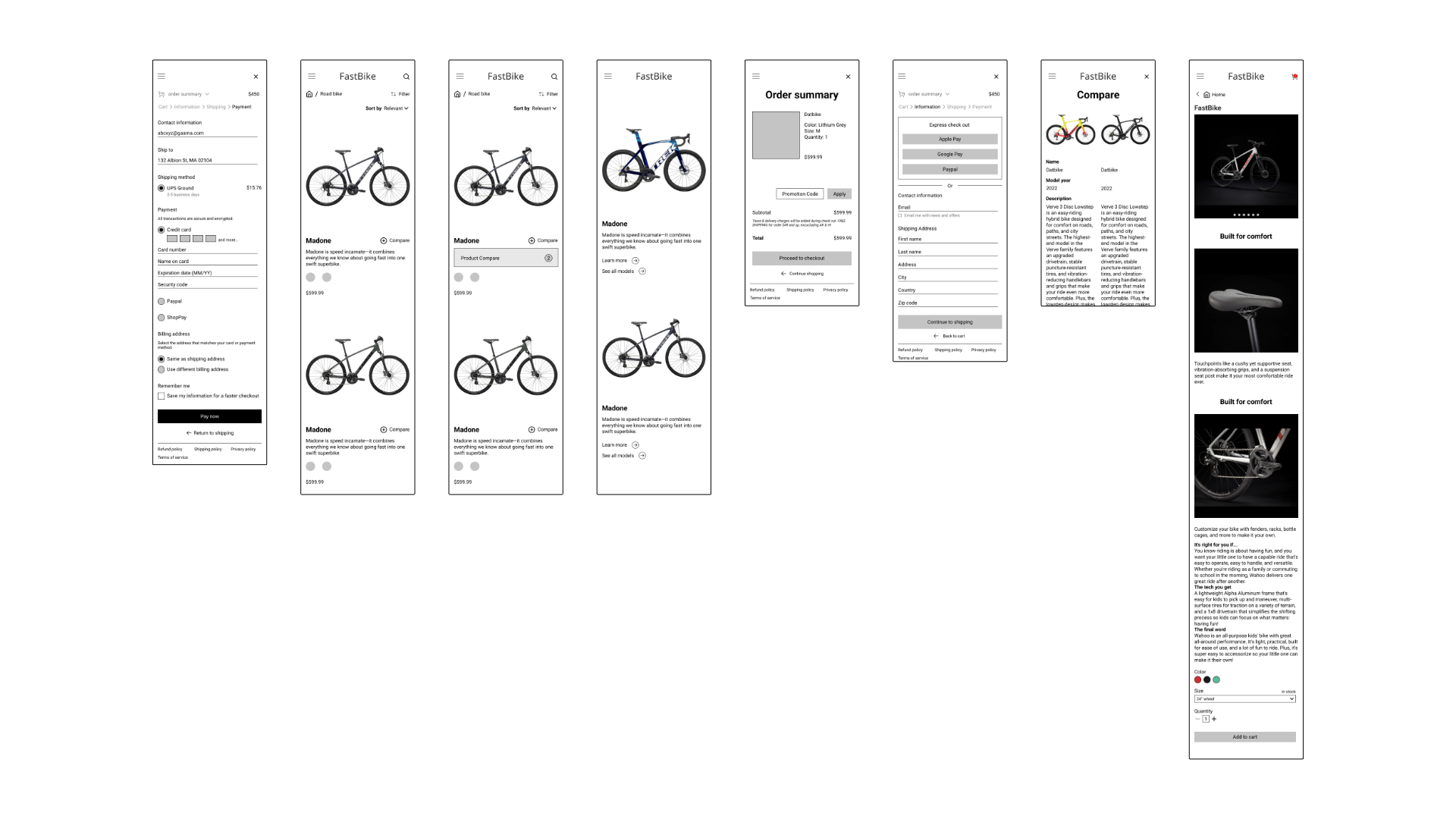
Hi-fi screens
Iterated high-fidelity designs after usability rounds.
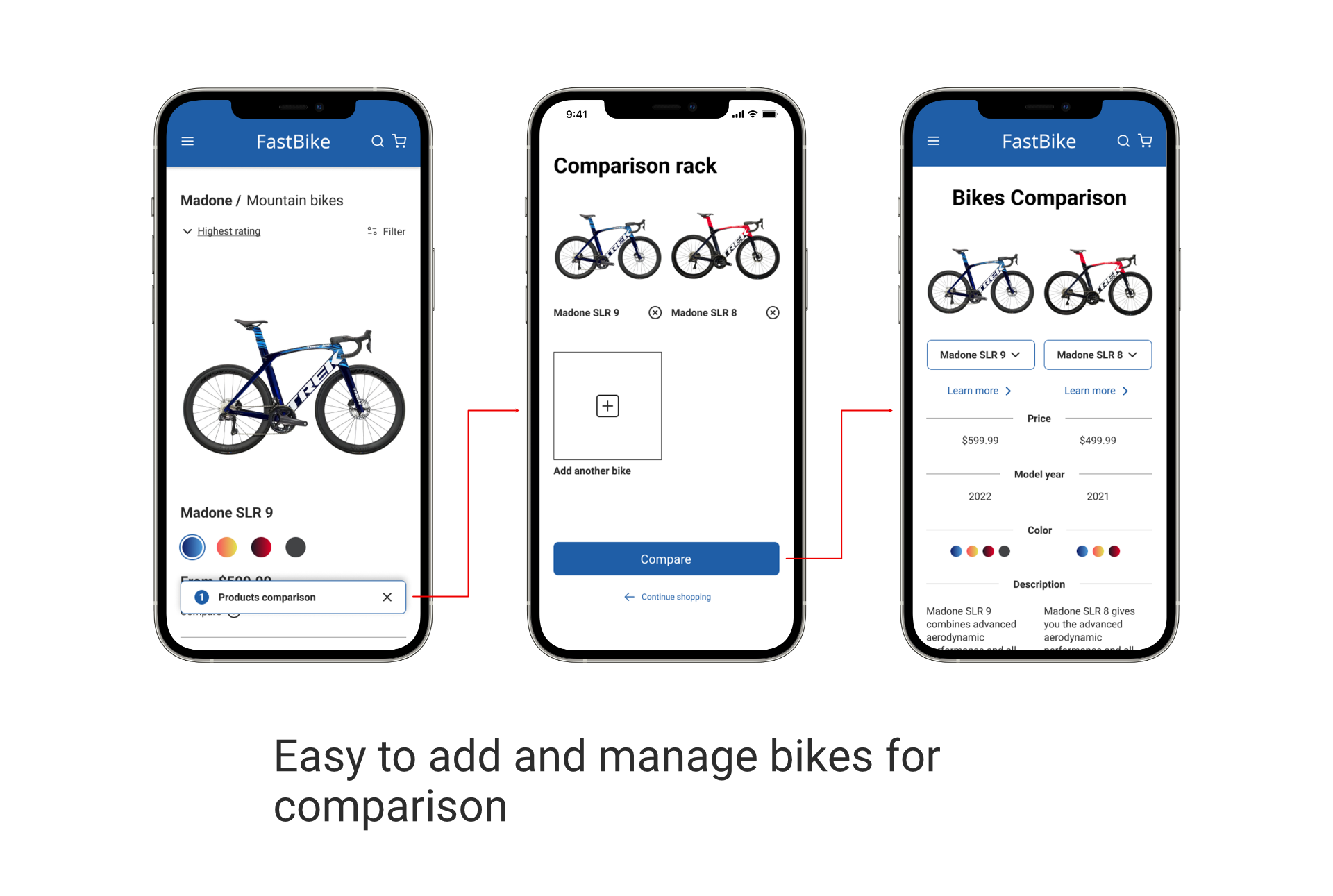
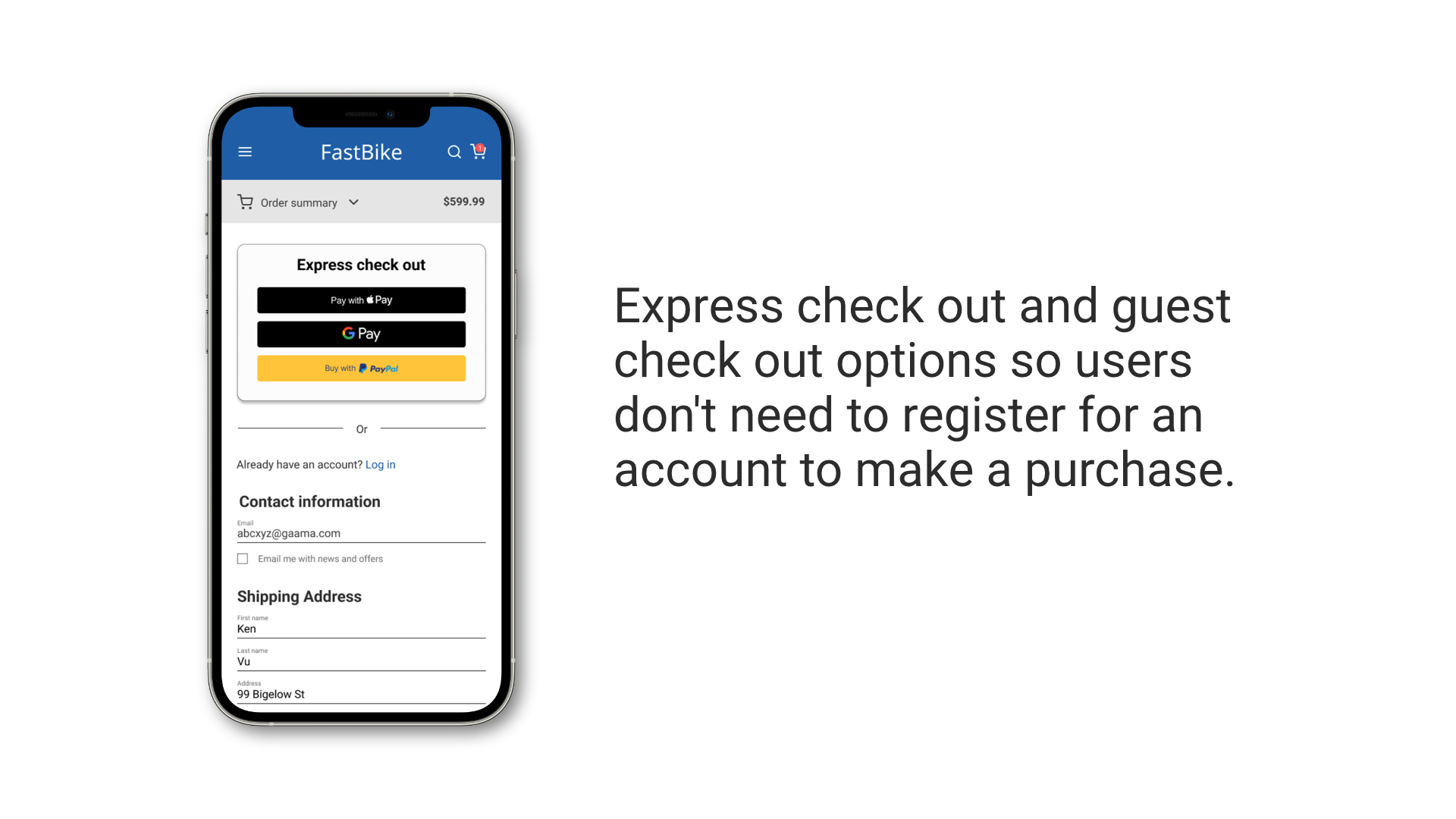
Testing & learnings
- Comparison cards reduced product-hopping; users chose in fewer steps.
- Guest checkout removed major drop-off; users preferred progress visibility.
- Specs needed bolder labels; improved contrast and spacing in later iterations.
Prototype
Key takeaways
- Mobile constraints force clarity—prioritize essentials and comparison.
- Guest checkout is a must-have for reducing abandonment.
- Early testing caught hierarchy issues before development.